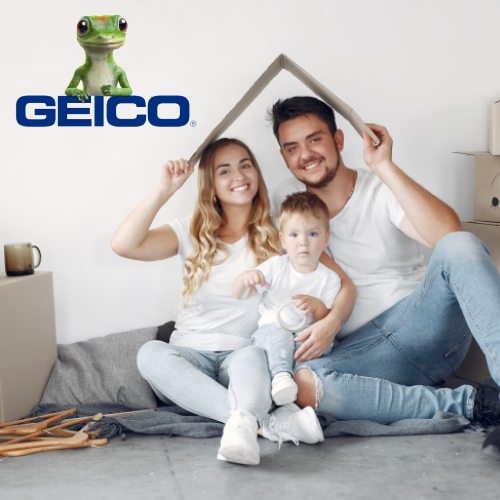The different types of Homeowners Insurance are essential to safeguard properties against risks such as fire, theft, natural disasters, and liability. In the market, there are several standardized policy types, each tailored to different types of residences and needs. These categories range from HO-1 to HO-8, covering everything from traditional homes to older properties, condos, and even mobile homes. Learn more about each type and see which one fits your profile best.
HO-1 (Basic Form)
HO-1, or Basic Form, is the most simple and limited type of homeowners insurance. It only covers specific risks such as fire, explosion, vandalism, theft, and certain types of weather-related damage.
Although it comes with a lower cost, this policy is rare today since most insurers prefer to offer broader coverage. For homeowners seeking only the essentials, HO-1 can be a starting option, but it does not cover personal liability or damages caused by risks not listed in the policy.
HO-2 (Broad Form)
HO-2, known as Broad Form, significantly expands protection compared to HO-1. In addition to the basic coverage, it includes risks such as falling objects, damage from the weight of snow and ice, and electrical short circuits.
This type of insurance is considered mid-level and offers a balance between cost and coverage. Homeowners who want more protection without paying for the most expensive policies often see HO-2 as a good alternative.
HO-3 (Special Form)
HO-3, or Special Form, is currently the most popular type of homeowners insurance in the United States. It covers almost all damage to the home’s structure, except those explicitly excluded in the policy, such as floods and earthquakes.
Additionally, HO-3 also protects personal belongings against a specific list of risks, such as fire, theft, and vandalism. This policy also includes liability coverage, which is crucial in cases of accidents occurring on the property.
HO-4 (Renters Insurance)
HO-4, better known as Renters Insurance, is designed for tenants who don’t own the property but want to protect their belongings. It covers furniture, electronics, clothing, and other personal items against fire, theft, and other common risks.
Another advantage is liability coverage, which protects renters in situations such as causing damage to others inside the rented house or apartment. The cost is usually affordable, making it a practical choice for anyone renting a home.
HO-5 (Comprehensive Form)
HO-5, or Comprehensive Form, is one of the most complete and extensive options available. It provides broad coverage for both the home structure and personal property, with fewer restrictions than HO-3.
This type of policy often includes replacement cost coverage, meaning the insurer pays the full cost to replace damaged or lost items without deducting depreciation. Although the premium is higher, HO-5 is ideal for those with higher-value homes or possessions who want stronger protection.
HO-6 (Condo Insurance)
HO-6, known as Condo Insurance, is designed for condominium unit owners. The policy covers the interior of the unit, such as walls, floors, and fixtures, as well as the policyholder’s personal belongings.
Usually, the building’s exterior and common areas are covered by the condo association’s master policy, but each resident is responsible for insuring their own unit. HO-6 also includes liability coverage, offering peace of mind in case of unexpected incidents.
HO-7 (Mobile Home Form)
HO-7, or Mobile Home Form, is intended for owners of manufactured or mobile homes. It is similar to HO-3 in terms of coverage, protecting both the structure and personal belongings, but it comes with adjustments specific to this type of property.
Since mobile homes face different risks, the policy takes into account factors like transportation and anchoring of the structure. This insurance provides extra security for a group of homeowners who often have fewer options in the traditional market.
HO-8 (Older Home Form)
HO-8, or Older Home Form, is ideal for older houses that often don’t meet modern building codes. It covers the same risks as HO-1 but with conditions tailored to the repair value of aging homes.
In many cases, HO-8 offers payouts based on market value or functional repair cost, since replacing original materials may not be feasible. This policy ensures that even historic or older homes receive adequate protection.
Conclusion
The different types of Homeowners Insurance provide options for various homeowner profiles, from owners of modern houses to renters or those living in older residences. Understanding each form is essential for choosing a policy that truly meets the needs of the property and personal belongings.
Before making a decision, it’s important to compare costs, coverage, and exclusions to avoid surprises in case of unforeseen events. That way, homeowners insurance becomes not just a requirement but an effective way to guarantee protection and peace of mind.
you’ll be redirected to the financial institution’s site
All information in this and other US PIXIN articles is subject to change over time. Please check for updates directly with the institutions and companies mentioned. Approval is subject to the institution’s review.
REFERENCES:
Read more about insurances in https://us.pixin.com.br/category/insurance/




